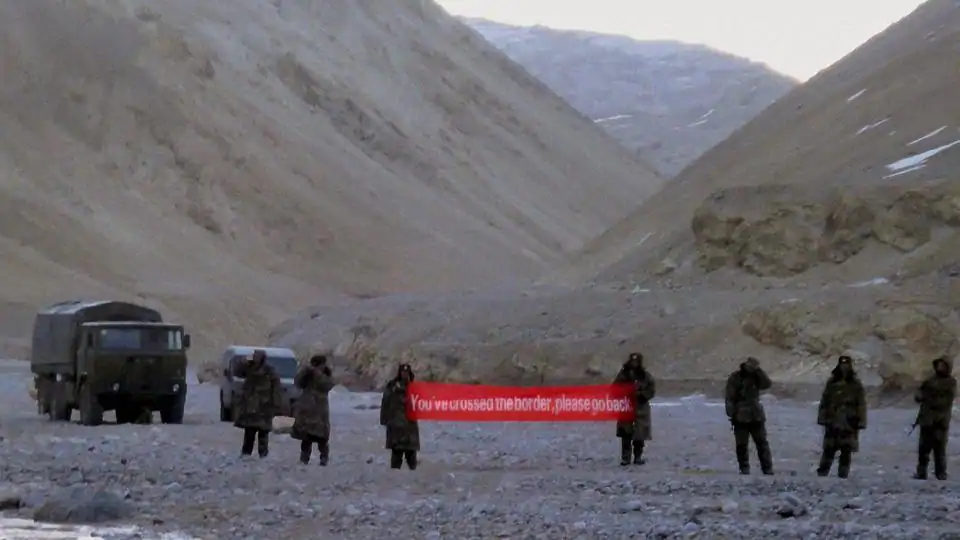
SOURCE: HT
Back in the autumn of 2012, a senior faculty member at the Mhow-based Army War College published a paper on the China’s war zone campaign (WZC). Beijing would, the army officer argued, seek to coerce smaller adversaries into acceding to China’s demand through graded threat of force or actual use of force till its ends are met. The officer, then Brigadier Manoj Mukund Naravane, wrote that the political objective of this Chinese concept is unveiled by “occupation of certain un-held tract of land or high value targets’. This would be done through elite forces.
The first would be the domination-cum-deterrence (DCD) phase where the People’s Liberation Army (PLA) would focus on building up its presence in the territory in question to deter the enemy. In the second phase, Gaining Initiative by Striking First (GISF), it would deploy rapid reaction units to strike first to wrest the initiative from the enemy. The last stage is the Quick Battle Quick Resolution where the PLA would use a dedicated division level force. But the PLA, the senior army officer said in his seminal paper published in Scholar Warrior, a journal published by the Delhi-based think tank Center For Land Warfare Studies, expects to achieve its objective in the first two phases.
As the Indian Army Chief now, General Manoj Mukund Naravane is faced with a WZC situation along the 3,488 kilometre long Line of Actual Control (LAC) with PLA opening multiple fronts in western and eastern sectors while the world including India battles the Covid-19 pandemic that has its origins in central China’s Wuhan city. The Chinese aggressive manoeuvres also entail the PLA moving support elements in depth areas of eastern Ladakh.
Although Gen Naravane didn’t refer to it in his 2012 paper, national security planners say the key to the Chinese WZC concept is deception coupled with state of the art intelligence, surveillance and reconnaissance (ISR) capabilities.
The top army officer was clear that the only way to counter the WZC strategy is to thwart Chinese designs in the initial two, DCD and GISF, stages.
Beijing did have the initial advantage when it moved soldiers to Galwan Valley and Pangong Tso in eastern Ladakh. The Chinese army had built roads right up to their claim line and could move in troops quickly, once it decided to activate them.
This advantage now stands neutralised with Indian force levels building up over the past weeks. The Indian Army is also staring at the aggressor with troops holding their positions and not allowing the Red Army to brow beat them at Galwan Valley and Pangong Tso.
Top government officials told Hindustan Times that the security establishment did realise that India’s northern borders would remain turbulent for some time to come after New Delhi decided to upgrade its border infrastructure in 2014.
For decades, India had been debating the extent and pace of creating border infrastructure along the Line of Actual Control with China. Beijing, meanwhile, kept building railway tracks and roads.
This meant that the Chinese PLA patrols along the border often went uncontested.
This started to change after India matching up the build up to a degree and earmarking its claim line through regular patrols. And this friction is expected to continue unless both sides exchange maps of their respective positions in both the eastern and the western sector.
The situation in the middle sector is far better after both sides exchanged maps in 2002. So both sides now know the exact disputed territory. The western sector maps were shared but never exchanged at the behest of Chinese; the eastern sector maps were not even shared.
While China openly covets Arunachal Pradesh as its territory, its long term game in eastern Ladakh could be to cut through Galwan-Murgo axis to provide an all weather alternative to the Karakoram highway, which enters Pakistan through Khunjerab Pass and not Karakoram pass north of Indian positions of Daulet Beg Oldi.
However, with the Indian Army digging into its positions to face the aggressor, the long drawn out mobilization may not work for the PLA as the law of diminishing returns comes into play like in the protracted 1979 Sino-Vietnam war. Status quo ante is the only viable option as it leaves both sides with a win-win situation.
https://defencenewsofindia.com/army-chief-naravanes-2012-prophecy-on-chinese-strategy-rings-true-in-ladakh-sector/






